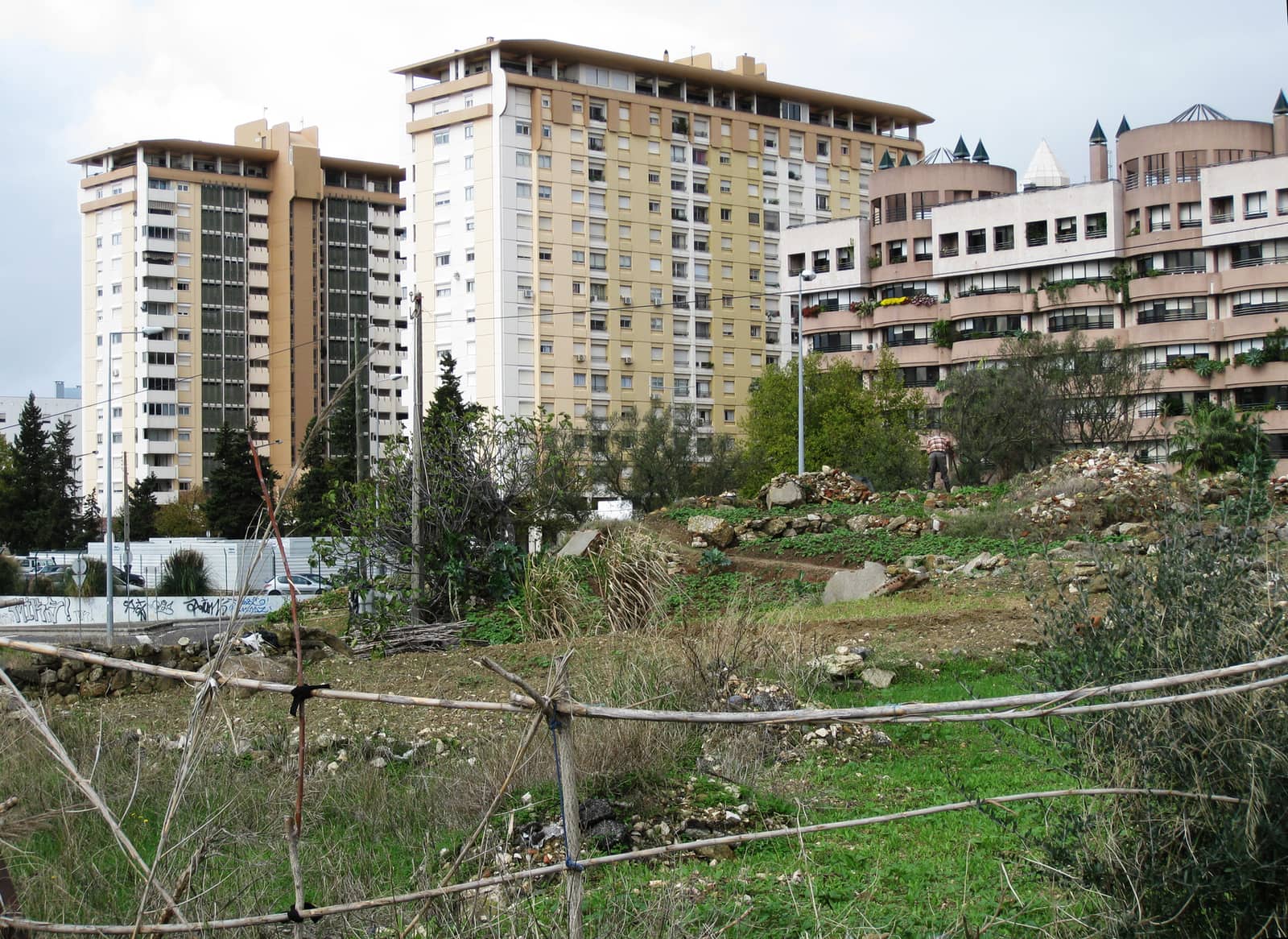Downloads
DOI:
https://doi.org/10.7480/spool.2020.1.5484Keywords:
landscape architecture, urban gardening, modernism, functionalism, ecology, modern artAbstract
Since the middle of the 19th century, when the term ‘landscape architecture’ began to replace the hitherto common term ‘garden art’, the garden as a work of art and gardening, understood as a predominantly decorative activity, stood in the critical discussion about the future of the metropolises. It was not only architects and urban planners who repeatedly questioned the value of ornamental gardens in the city. Against the background of the enormous growth of the cities in the industrial age and the accompanying social problems, leading European landscape architects in the 20th century like Leberecht Migge (1881-1935), Ernst Cramer (1898-1980), and Dieter Kienast (1945-1998) stated that gardening is neither artistic work nor scientific planning, neither modern nor progressive. Given the respective historical context as well as the particular conception of city and society, this criticism is comprehensible. In the 21st century though, the garden as a living component in the ‘network metropolis’, and gardening itself, especially ‘urban gardening’, were experiencing a remarkable renaissance. Against the background of today’s rapid development of the ‘Zwischenstadt’, it turns out that the basic principles of garden thinking never really lost their relevance.
How to Cite
Published
License
Copyright (c) 2020 Udo Weilacher

This work is licensed under a Creative Commons Attribution 4.0 International License.

References
Ammann, G. (1948). Kleinarchitektur und Plastik im Hausgarten [Small Architecture and Sculpture in Private Gardens]. In Schweizer Garten 10. Münsingen: Schweizer Garten.
Bill, M. (1949). Schönheit aus Funktion und als Funktion [Beauty from Function and as Function]. In Werk 8, Winterthur: Das Werk.
Brogle, T. (1949). Der Qualitäts- und Formgedanke in der schweizerischen Industrie [The Motion of Quality and Form in Swiss Industry]. In Werk 8, Winterthur: Das Werk, p. 259.
Burckhardt, L. (1981). Gartenkunst wohin? [Garden Art whereabouts?]. In Andritzky M., Spitzer, K. (Ed.). Grün in der Stadt [Green in the City]. Reinbek: Rowohlt, pp. 258/259.
Burckhardt, L. (2015). Why is Landscape Beautiful?: The Science of Strollology. Basel: Birkhäuser.
De Witt, S. (2018). Hidden Landscapes: The metropolitan garden as a multi-sensory expression of place. Amsterdam: Architectura & Natura.
Eliovson, S. (1991). The Gardens of Roberto Burle Marx. Portland, Oregon: Timber Press.
Fischli, H. (1959). Letter to Ernst Cramer (1958, August). ASL Dossier, Archive Rapperswil.
Gröning, G. & Wolschke-Bulmahn, J. (1997). Grüne Biographien [Green Biographies]. Hannover: Patzer.
Grün 80 (Ed.), (1980). 2. Schweizerische Ausstellung für Garten- und Landschaftsbau 1980, Basel. 12. April – 12. Oktober 1980. Schlussbericht der Direktion [2nd Swiss Exhibition for Garden and Landscape Construction 1980. April 12 – October 12, 1980. Final report of the management]. Basel: Grün 80.
Jackson, J. B. (1984). Discovering the Vernacular Landscape. New Haven/ London: Yale University Press.
Kassler, E. B. (1964). Modern Gardens and the Landscape. New York: The Museum of Modern Art, New York.
Kienast, D. (1979). Vom naturnahen Garten oder Von der Nutzbarkeit der Vegetation [About nature-oriented Gardens or About the Usability of Vegetation]. In Der Gartenbau 25/1979, Zuchwil: dergartenbau.
Kienast, D. (1981). Vom Gestaltungsdiktat zum Naturdiktat – oder: Gärten gegen Menschen? [From Diktat of Design to Diktat of Nature – or: Gardens against People?]. In Landschaft + Stadt, 3/1981, Stuttgart: Ulmer.
Kienast, D. (1990). Die Sehnsucht nach dem Paradies [The Desire for Paradise]. In Hochparterre 7/1990, Glattbrugg: Curti Medien AG.
Kienast, D. (1994). Zwischen Poesie und Geschwätzigkeit [Between Poetry and Talkativeness]. In Garten + Landschaft 1/1994, München: Callwey.
Le Roy, L.G. (1973). Natuur uitschakelen – Natuur inschakelen [Switch on Nature – Switch off Nature]. Deventer: Ankh Hermes.
MacMillan Johnson, L. (2001). Burle Marx, Roberto 1909-1994. In Chicago Botanic Garden (Ed.). (2001). Encyclopedia of Gardens. History and Design, vol. 1. Chicago, London: Routledge.
Markl, H. (1983). Die Verantwortung für den Bestand des Lebens – Evolution und ökologische Krise [The Responsibility for the Existence of Life – Evolution and ecological Crisis]. In Mitteilungen der Deutschen Akademie für Städtebau und Landesplanung, 27th year, vol. 3, Hannover: DASL.
Migge, L. (1919). Jedermann Selbstversorger! Eine Lösung der Siedlungsfrage durch neuen Gartenbau [Everybody Self-Sufficient! A solution to the settlement issue through new horticulture]. Jena: Diederichs
Migge, L. (1913). Die Gartenkunst des 20. Jahrhunderts [The Garden Art of the 20th century]. Jena: Diederichs, pp. 142, 151.
Migge, L. (1927). Der kommende Garten [The Coming Garden]. In Gartenschönheit: Illustriertes Gartenmagazin für den Garten- und Blumenfreund 8/1927, Berlin-Westend: Verlag der Gartenschönheit, p. 64.
Müller, C. (Ed.). (2011). Urban Gardening. Über die Rückkehr der Gärten in die Stadt [Urban Gardening. About the Return of the Gardens to the City]. München: Oekom.
Owens, D.H.B. (1970). Environmental design for survival in the seventies. In Anthos 3/1970. Zürich: Graf + Neuhaus.
Sieverts, T. (1997). Zwischenstadt. Zwischen Ort und Welt, Raum und Zeit, Stadt und Land [Zwischenstadt: Between Place and World, Space and Time, Town and Country]. Braunschweig: Callwey.
Sieverts, T. (2002). Cities without cities: An interpretation of the Zwischenstadt. London: Routledge.
Stoffler, J. (2008). Gustav Ammann. Landschaften der Moderne [Gustav Ammann. Modernist Landscapes]. Zürich: GTA.
Weilacher, U. (1996). Between Landscape Architecture und Land Art. Basel: Birkhäuser
Weilacher, U. (2001). Visionary Gardens. Modern Landscapes by Ernst Cramer. Basel/Berlin/Boston: Birkhäuser.
Weilacher, U. (2013), Das Stiefmütterchen wird diffamiert Interview von Henning Sussebach. [The pansy is defamed. Interview by Henning Sussebach]. In Dossier, published by Die Zeit, nr. 14, 27 March 2013, Hamburg: Die Zeit, p. 15.
Werner, K. (2011). Eigenwillige Beheimatungen. Gemeinschaftsgärten als Orte des Widerstands gegen die neoliberale Ordnung [Idiosyncratic Homes. Community Gardens as Places of Resistance to the neoliberal Order]. In Müller, C. (Ed). (2011). Urban Gardening. Über die Rückkehr der Gärten in die Stadt [Urban Gardening. About the Return of the Gardens to the City]. München: Oekom, p. 71.
Wimmer, C. A. (1989). Geschichte der Gartentheorie [History of Garden Theory]. Darmstadt: Wissenschaftliche Buchgesellschaft.
Wismer, B. (1985). Mondrians ästhetische Utopie [Mondrian’s Aesthetic Utopia]. Baden: LIT Lars Müller.



